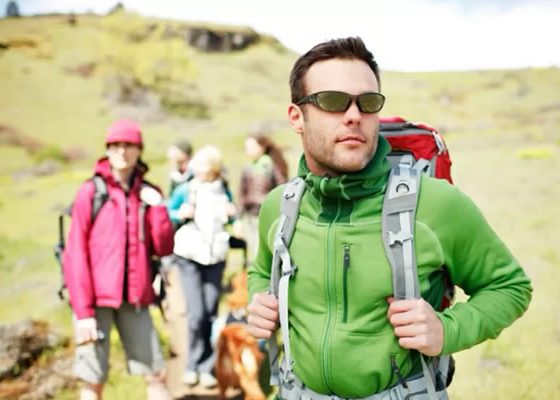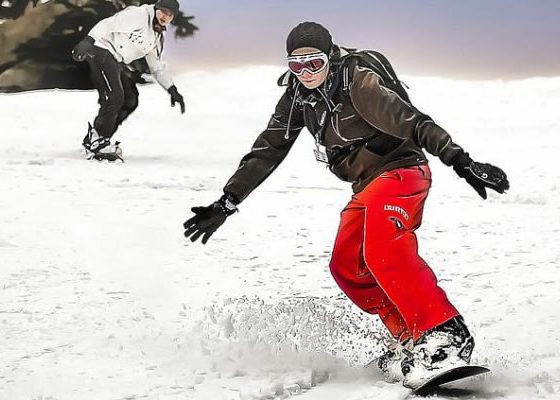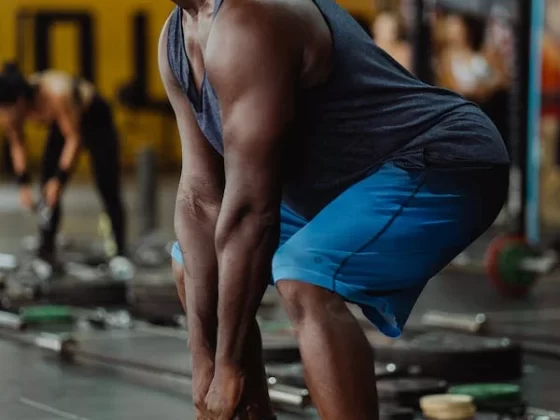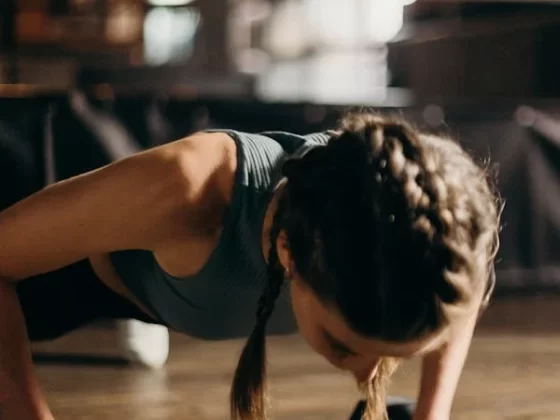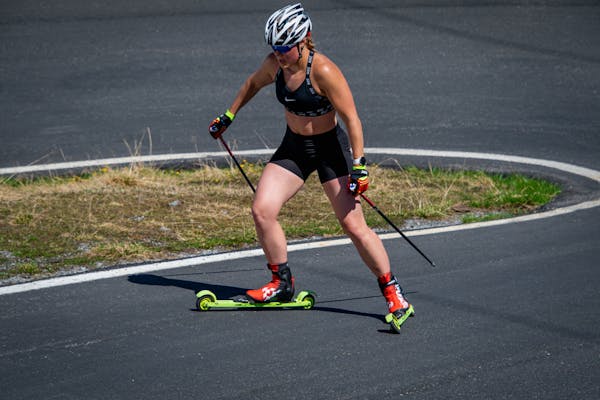
Roller skiing is an option to consider when there is no longer snow on the ground. This sport is similar to cross country skiing but uses skis that glide on wheels instead of those designed to glide on snow. The elongated skis have wheels on the ends to mimic the action of cross country skiing. In this article, summer cross-country skiing tips present a unique challenge and opportunity for enthusiasts with its three popular styles and other considerations.
Roller Skiing and Cross Country Skiing
Roller-Skiing
Roller-skiing mirrors cross-country skiing but on wheels! It’s a fantastic year-round activity suitable for maintaining fitness, honing technique, or even mastering skiing skills ahead of the winter season.
Similar to cross-country skiing, roller skis come in classic or skate styles. Classic roller skis feature a wheel that prevents rolling backwards. For optimal performance, smooth roads or bike paths with minimal traffic are ideal, with asphalt or bitumen surfaces preferred over concrete, as concrete surfaces are too complex for pole tips to grip effectively.
Roller ski wheels typically consist of solid rubber, though pneumatic wheels are also available. While standard ski poles can suffice, swapping out the baskets for more durable roller ski pole tips is recommended. Helmets are essential for safety, while additional protective gear such as knee and elbow pads are optional but can offer added reassurance.
Cross-Country Skiing
Cross-country skiing encompasses both competitive sport and recreational activity. While skiing alone often conjures images of downhill skiing, the addition of “cross-country” distinguishes this particular form of skiing, emphasizing its focus on traversing varied terrain rather than descending slopes.
Unlike downhill skiing, cross-country skiing involves relatively flat terrain, typically on steep slopes.
In cross-country skiing, participants utilize poles to propel themselves forward. The skis used in cross-country skiing differ from those in downhill skiing in shape, size, and construction. Cross-country ski boots feature a heel lift mechanism, allowing for striding, unlike downhill ski boots, which firmly attach to the skis.
Cross-country skiing competitions exist, including sprints and longer-distance races like the Skiathlon. Events may feature simultaneous or staggered starts, with categories encompassing individual, team, and relay races.
Competitive cross-country skiing events are prominent at the Winter Olympics and the Paralympic Winter Games. Additionally, cross-country skiing is a core component of the biathlon event.
Cross-country skiing is a subset of Nordic skiing disciplines, including ski jumping, which differs from Alpine skiing, commonly called downhill skiing, and comprises events such as downhill and slalom.
Where did the term cross-country ski come from?
The term “cross-country” is employed in athletic races, encompassing running and skiing, to signify that the race occurs across open terrain, such as fields and woods, rather than on a track or artificial surface. Cross-country skiing, dating back to the early 1900s, has been a prominent aspect of this context.
Originating from the practical use of skis for travel and transport, particularly within Scandinavian hunting culture, cross-country skiing has historical roots deeply embedded in utility.
Since its inception, cross-country skiing has been a staple of the Winter Olympics, featured in the inaugural Winter Games held in 1924.
Cross-country skiing has evolved throughout its history, giving rise to various techniques. Traditional styles involve skiers gliding with parallel skis, while more contemporary approaches incorporate alternating strides for enhanced efficiency.
Who can participate in Roller Skiing?
Using identical techniques to those employed in snow skiing, roller skiing is perfect for individuals looking to familiarize themselves with the sport and master the basics before venturing onto snow-covered ski tracks for the first time. It also serves as an excellent off-snow cross-training option for those seeking to maintain ski fitness or technique before a significant winter trip or event. Like its winter counterpart, roller skiing demands physical exertion but offers a rewarding full-body, low-impact workout. You’ll likely find roller skiing manageable if you possess the cross-countis likely ry skiing. Concerns regarding potential falls on asphalt can be alleviated by wearing suitable protective gear, including kneepads, elbow pads, helmets, and even padded cycle shorts.
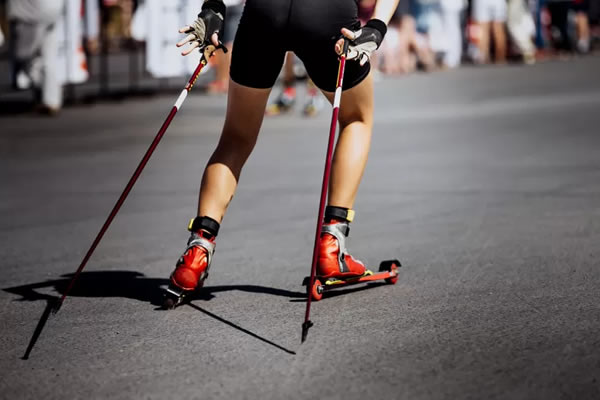
Summer Cross-Country Skiing Tips and Styles:
Originally designed for cross country ski racers who needed to do off-season training, summer skiing has grown in popularity since more people want to keep in shape all year-long and continue to experience the benefits of cross country skiing.
Most Popular Roller Skis Styles:
You can find a variety of rollerskis that can be used during the summer months. Some of the most popular styles and brands to consider are:
V2 Roller Skis
Made in America, V2 Roller Skis by Jenex are not only designed to give you the ultimate ski workout but also to keep your safety in mind. They have speed reducers and emergency brakes to help you control your speed when going down a grade, and allow for you to stop as needed. The inflatable wheels give you a cushioned ride and allow for skiing on both smooth surfaces and rough terrain.
V2 Roller Skis come in three different styles:
- Combi: These skis are ideal to use on a variety of surfaces and can go over rougher terrain. The Aero XL 150SC are great to use on hills or mountainous terrain.
- Classic: These skis are perfect to use on bike paths, pavement and solid packed dirt roads. The classic XL 150RC give the user a smooth, solid ride and is a versatile option for all level skiers.
- Skate: These skis are designed for those looking to freestyle ski. The XLA850 feature full fenders and give the option to add brakes and speed reducers.
You can purchase V2 roller skis at a variety of ski and sport shops across the United States. You can also purchase directly from the website or by calling 1-877-V2-Jenex. Most roller skis are in the $300 to $400 price range.
Marwe Rollerskis
Marwe rollerskis are exclusively distributed by Finn Sisu. This brand of ski is best known for its on-snow feel and is great for cross training in off-season months. Marwe skis are used by Nordic skiers worldwide and have become popular because they are durable yet affordable.
Some Marwe styles include:
- Marwe Classic 700A: This rollerski is an entry-level ski and is priced under $300. It is easy to steer, has stiff control and will mimic the speed of snow skiing.
- Marwe Skate 620XC: This rollerski is ideal for all-around training. The wheels have a superior grip and can be used in sand, debris and rougher terrain. It is priced under $400.
Marwe has a retail outlet in Minnesota, but you can order online from anywhere in the United States and Canada.
Swenor Rollerskis
Swenor rollerskis are designed to feel as if you are training on snow. This Swedish brand was created for athletes in Sweden and Norway for training during the off season. Swenor skis are used by ski teams worldwide.
Some Swenor styles include:
- Carbonfibre Classic Rollerski: This ski is a great choice for those looking for flexibility while skiing. It is designed for smaller skiers and features a smaller shaft and wheel diameter. This lightweight choice is under $300 and will give you the feeling of skiing on snow.
- Fibreglass Classic Rollerski: This durable pair of skis is lightweight yet durable. They can handle harsher road conditions and will provide smooth rolling and mimic the feel of skiing on snow. This style is also priced under $300.
Swenor rollerskis are available at select retailers, and can be purchased online at Gear West.
Where to Roller Ski?
While purpose-built roller ski courses are prevalent across Europe, options in the UK are limited, with just two located in North Scotland. However, numerous cross-country ski clubs throughout the UK offer roller skiing instruction and training sessions, typically utilizing cycle tracks and public parks. Some clubs even provide ski-touring-style experiences, organizing day trips along the Cambridge cycle route or through the English Lake District.
During summer, the British Rollerski Race Series draws a significant turnout from the UK’s small yet devoted roller skiing community. Participants range from complete beginners to international athletes. Local parks and cycle tracks (where permitted) serve as ideal starting points for those venturing out solo. Roller skiers should seek out smooth tarmac surfaces with safe surroundings, ensuring ample space to manoeuvre in case of any off-track rolling.
What equipment is required?
Roller Skis:
Available in various types for classic, skate, or combi techniques, roller skis come with different wheel speeds and frame designs tailored for skiers of different weights. Skate roller skis are slightly shorter than classic ones, mimicking snow skis. Classic roller skis use a wider wheel and a ratchet mechanism to replicate the ski wax effect, allowing uphill striding without rolling backwards. Roller skis do not have brakes like skis, so mastering stopping techniques such as steep turns and snowploughs is essential before attempting descents.
Bindings, Boots, and Poles:
Standard ski equipment can be used, although some skiers opt for dedicated roller ski boots to minimize wear and tear on their footwear. Ski poles remain the same, but tips can be switched from snow baskets to sharper ones suitable for hard surfaces.
Helmet and Protective Gear:
Helmets are necessary for roller skiing, providing essential protection against potential falls. Beginners should wear elbow and knee pads for added safety and confidence when navigating different terrains and obstacles.
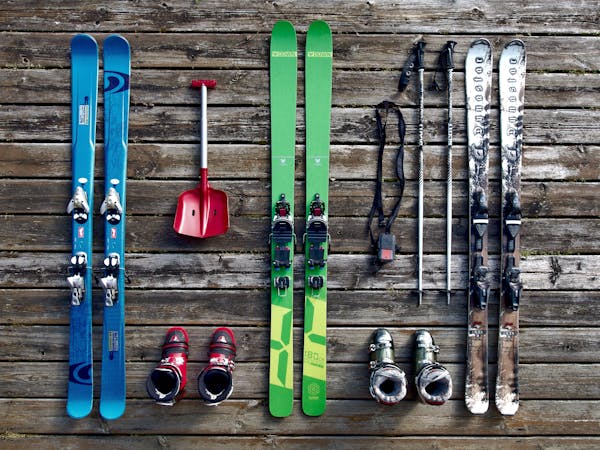
Factors to Consider:
When planning on purchasing a set of summer cross country skis, there are several factors to consider.
-
Skill level:
A more advanced skier may look for a ski without a brake or speed reducer. Beginner skiers may want a stiffer ski that is easier to control.
-
Terrain:
A classic rollerski can go over smoother terrain whereas a skate or combo ski will give you the ability to ski on packed dirt, over debris and on rougher road conditions.
-
Technique:
A classic ski can be used to train or for recreation. A skate ski can be used to freestyle ski and to practice advanced skiing techniques.
You may also want to consider your budget. Skis come in a variety of price ranges so if you are only going to use them occasionally, choose a pair that is more affordable. Those who plan on using the skis to train vigorously during the off season may want to invest in a more pricey option.
Maintenance for Summer Skis
Just like any other sports equipment, roller skis need to be maintained properly. Before each use, you will want to check that your binding screws and wheel axel nuts are tightened. Loose components can cause injury during skiing. You will also want to check your wheels and replace them once they are damaged or aged. Keeping your summer skis in top shape will help them last longer and will provide you with many seasons of fun and conditioning.
Conclusion:
Stretch your body out doing physical activities like cross-country skiing during summer. In this, you will enjoy the whole summer outdoors and prepare your entire body for winter activities. When purchasing roller skis, always refer your considerations to yourself and consult professionals as much as possible.
